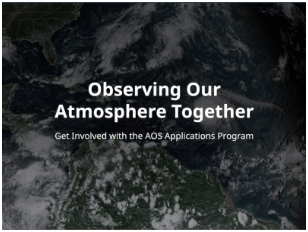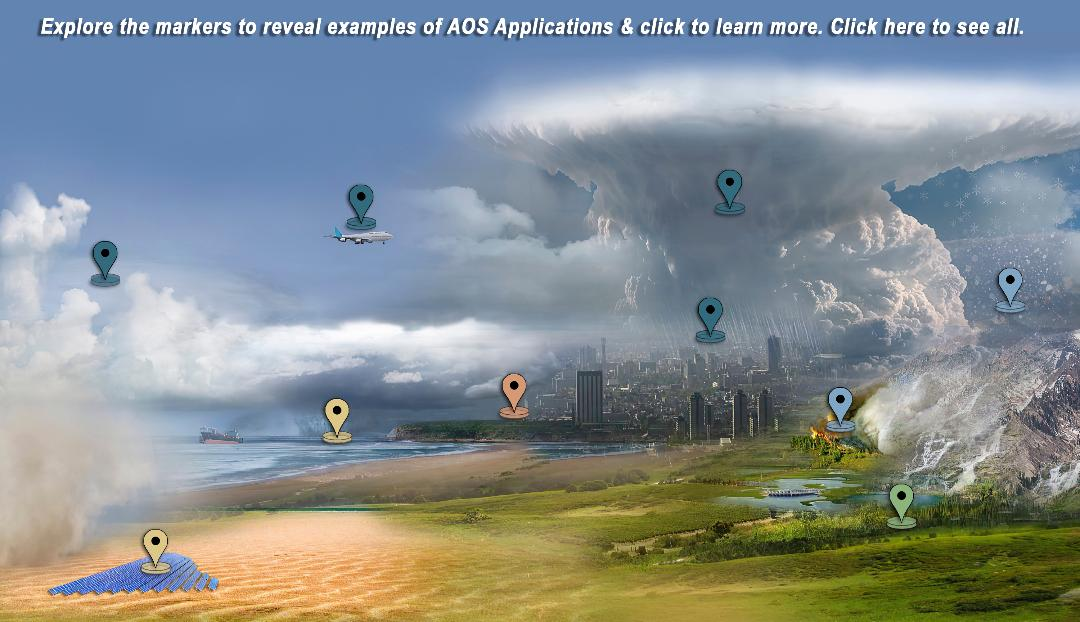Applications
The goals of the Atmosphere Observing System (AOS) are to study processes of aerosols, clouds, convection and precipitation in order to better understand our Earth system in an integrated way and enhance and improve the communities' ability to forecast weather, monitor air quality, and model climate processes. The Application Impact Team will help support, connect and enable how AOS products can be used to benefit society through a broad range of applications and user communities.
The AOS Early Adopter program will begin soon. The AOS Early Adopter program will promote applied science and applications research designed to scale and integrate AOS data into policy, business, and management activities that benefit society and inform decision making. Interested in becoming an Early Adopter?
Please contact the AOS Applications Team: Emily Berndt and Andrea Portier.


